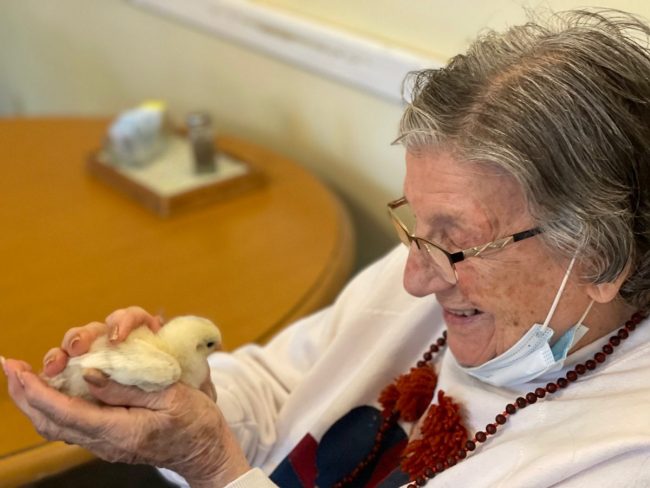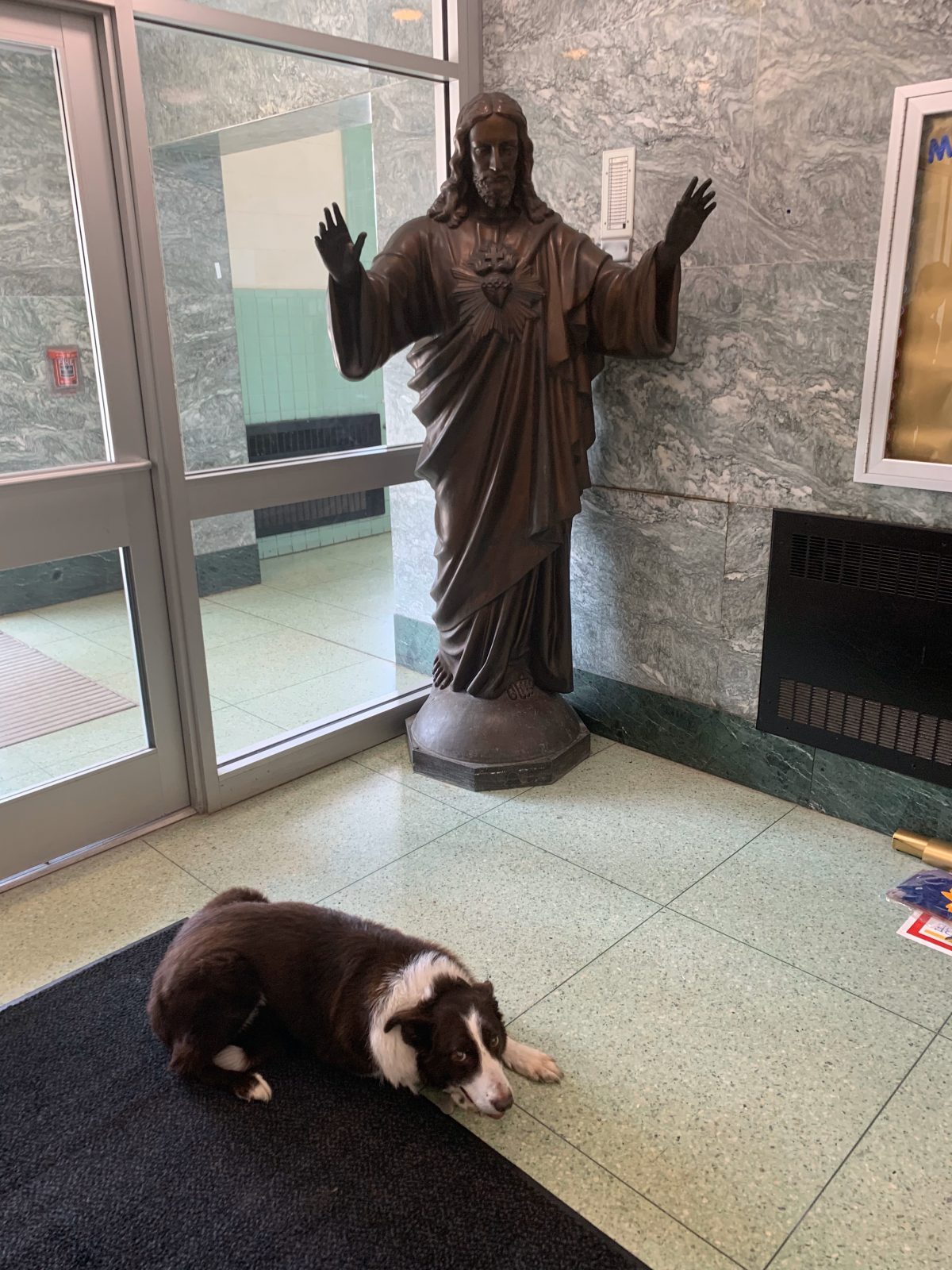I was up for much of the night last night reading an extraordinary, and yes, disturbing book – The Dangerous Case Of Donald Trump.
Along with Mary Trump’s powerful de-construction of Donald Trump’s childhood, Too Much And Never Enough, this important book is long overdue.
This is something we all need to understand in the Fall of 2020, as Trump desperately hangs into his long reign of dishonesty, self-obsession, chaos, and hatred.
For me, well-being comes from understanding, not hatred or argument. The truth is clear and simple, emerging from the fog of manipulation: Donald Trump is sick and he is making many of us – friends and foes – sick as well.
Some of the most respected psychiatrists in the world have gathered together to tell us why this is happening to us and our country.
Dr. Lele’s inspiration is the devastating portrait of a leader who has no conscience and no ability to empathize with other human beings. He is unable to yield, feel, or change.
In this way, and this office, he is dangerous.
For me, it was calming, even uplifting. It’s better to know than not to know the truth and fear it, at least in this case. The book is the result of a project organized and edited by Dr. Brany Lee of Yale University.
Dr. Lee is the organizer of Yale’s “Duty To Warn” Conference, where 37 Psychiatrists and Mental Health Experts from across the country and around the world came together at Yale to diagnose and assess the Mental Health of Donald Trump.
They believed they had a moral duty to warn our country about the person leading it. The book is jarringly relevant and timely. It is sometimes clinical and 475 pages long, but 80 percent of the time quite readable.
It is the story of President Trump’s now apparent and quite unnerving mental illness, and also about our own illnesses. A Trump doesn’t happen in a vacuum; rage and grievance and hatred is his diesel fuel.
He taps right into the fractured souls of many millions of Americans, perhaps even all of us.
I understand better now that Trump is making millions of Americans sick, including many people who support him so blindly and intensely.
I should say of Trump is that he is both severely damaged and, yes, dangerous. But I do not believe for a moment that he has the strategic or emotional skills to manage a takeover of a country like the United States.
It won’t work. It is the beginning of his end.
But it has never been more important a time to understand him, how he has traumatized half the country and enslaved the minds of the other half. This is a consequential President.
The book is thorough and detailed; it’s broken into more than a hundred chapters and Five Parts: The Trump Phenomenon: How The Leader Of The Free World Is Unfit For Duty; The Trump Dilemma: Should Psychiatrists Refrain From Commenting on Trump’s Psychology; The Trump Effect: Trauma, Time, Truth, And Trump, How A President Freezes Healing and Promotes Crisis, Trump Anxiety Disorder; Cultural Consequences, Persistent Enslavement Systemic Trauma, and Humanity’s Perpetuation and Survival, Trump’s threat to freedom and the environment.
I intend to read the whole book, but I’ll focus first on Part 3, Trump, Trauma, and Trump Anxiety Disorder. There is a lot for me to write about here.
In the book, some of the country’s most accomplished psychiatrists and mental health experts diagnose Donald Trump as suffering from Malignant Narcissism and sociopathic behavior.
According to Psychology Today, narcissistic personality disorder includes symptoms such as poor self-identity, inability to appreciate others, entitlement, lack of authenticity, need for control, intolerance of the views/opinions of others, emotional detachment, grandiosity, lack of awareness or concern regarding the impact of their behavior, minimal emotional reciprocity, and a desperate need for the approval and positive attention of others.
A sociopath: The defining characteristic of the sociopath is a profound lack of conscience—a flaw in the moral compass that typically steers people away from telling the truth, breaking common rules, and toward treating others decently.
This disconnect, however, may be hidden by a charming demeanor.
A good example of a sociopathic president is one who delays a peaceful transition of power following a legal election and thus endangers the people trapped in a pandemic.
A President who does not care about the illness or death he might be causing is one without a conscience, a primary symptom of malignant narcissism and the sociopath.
Chapter Three focuses on two kinds of mental illnesses that Trump, according to many surveys that Trump has caused or greatly increased.
The first is trauma.
In the days following his election in November 2016, writes Dr. Betty Teng, millions of people – many individuals targeted by Trump’s rageful and frequent expressions of xenophobia, racism, sexism, and Islamophobia, experienced his election as traumatic.
Trump’s language used to describe non-white Americans were especially troubling to great numbers of people, even Caucasians.
But the people he singled out suddenly and repeatedly felt targeted, and according to FBI records on hate crimes, they were in rapidly increasing numbers.
Diagnoses of trauma in Americans more than quadrupled. Hate crime stats are close behind.
The American Psychological Association defines trauma as “an emotional response to a terrible event like an accident, rape, or natural disaster.”
For many people, his election, and then his presidency, and now re-election campaign – were and are truly terrible, even disastrous events.
This is historic. Trump’s supporters in government make much of the intensity of the opposition to him, but they seem utterly ignorant of the fear he has caused, way beyond conventional political disagreements.
I was slow to get it myself.
Many presidents provoke disagreement, even hatred, but no President has ever sparked a mental health crisis before. Under his rule, we have become an aggrieved, angry, frustrated, and fearful people.
That this does not trouble his followers or supporters is a prime reason so many Americans are anxious. They don’t think we care about them, and we don’t think they care about us. He certainly does not.
Even more troubling, he seems to relish it. Many people who have worked with think it is the point for him – to give the finger to all of the people he and his followers consider to be disapproving and snobbish elites on the cultural left.
That, they say, is at the core of almost everything he does.
Many people feel – and are – especially vulnerable and unprotected by their government or fellow citizens.
In the months following Trump’s election, psychotherapists nationwide reported an unprecedented focus on politics in their sessions.
This has enormous implications for any democracy, which promises its citizens both safety and protection.
In such times, many people gravitate to the Strongman. That is the danger of chaos.
The doctors found that Trump and his advisers have shaken our notions of truth and facts.
This has triggered a wave of PTSD-like symptoms of insomnia, lack of focus, hypervigilance, anger, irritability, and volatility that was once reserved for combat veterans and first responders, and survivors of rape and violent crime.
Doctors and psychologists from all over the country see cases of PTSD from people in ordinary jobs living “ordinary” lives.
For the first time, tens of millions of Americans have been traumatized. When I read this, I realized the meaning of what I see and hear every day but hadn’t put a name on. It isn’t just politics.
One of the fascinating findings in the book, for me, is the evidence that it is not only Trump’s opponents who develop these systems but also greatly affect his supporters.
This explains why just about every message I got all year from a Trump supporter was angry, either the transmission of a lie or proven untruth, or distortion of a fact, the false evocation of socialism or communism, or a paranoid fantasy about a radical left or murderous black protesters.
Trump, said one psychiatrist, traffics in paranoia and grievance; that is his marketing focus. If you are not paranoid or aggrieved, you get frightened or upset by someone who is.
If you support Trump, he projects paranoia and grievance onto his supporters to bond them – or enslave them – to him and hate his enemies. The odd thing is you can’t really be a Trump supporter of you don’t share, on some level, paranoia about political opponents, non-white people, government, and rage.
This may or may not be unconscious or knowing, but it seems quite logical to me.
This also helps explain some of the cultish loyalty Trump inspires in so many people in the face of his incompetence and chaos.
I am surprised to see that Christian nationalists are as prone to this as working-class people with long lists of grievances. Jesus is weeping somewhere up there.
One therapist wrote: “As a trauma therapist, I puzzle over this correlation of symptoms in greater numbers of the general American populace to PTSD, where the source of trauma is not a physical attack or natural catastrophe but the incessant barrage of aggressive words and daily reports of the erratic conduct of a powerful, narcissistic, and attention-seeking world leader.
There is much debate, she said, on whether post-Trump distress disorder is “real,” or just another example of liberal hysteria or the left-leaning media, both of which are often accused of overinflating suffering.
No, she says, PTDS is quite real, and the questions about it trivialize the suffering of true trauma survivors who have experienced “real” attacks and harm.
One psychiatrist after another said the same thing: we are only beginning to understand how the election and post-election actions of a president such as Donald Trump could cause many Americans to feel traumatized and retraumatized.
It was terrifying to many people, report the shrinks, that a reality television celebrity with no previous legal, legislative, government, or foreign policy experience could become President of the United States at all.
It is also frightening to many people to see that the body politic in America chose Donald Trump, who knows nothing about running a huge and diverse nation.
What I take from this book is not only that Donald Trump is mentally ill, but that much of the country is also, or he would never have been elected in the first place.
For many people, especially the previously traumatized, Trump is a trigger, often mirroring their own abusive parents or relatives or siblings. He triggers memories and experiences – abusive parents, bullies, the authoritarian teacher, and the sexually aggressive boss.
Under the daily onslaught of Trump’s rage and dishonesty (and the enormous support and enabling he receives for both), people fall out of their “windows of tolerance” or cognitive space and tools for calm and experience panic attacks, flashbacks, depression, and disassociation.
When you defy norms, wrote one psychiatrist, you scare people. Suddenly lying is okay, so is infidelity, so is abuse, so is an out of control pandemic. These violations of norms scare people; they have no frame of reference for them.
We aren’t talking about a handful of disturbed people, says Harvard trauma expert Dr. Bessel van der Kolk, but many more.
The CDC reports that one in five Americans was sexually molested, one in four beaten severely by a parent. one in three spouses the victim of physical violence, and a quarter who have grown up with alcoholic relatives. One in eight Americans witnessed their mother being beaten or hit.
The bottom line here is that these mental health professions have found that President Trump is a destabilizing force that is profoundly disturbing to many of the people he is sworn to serve.
Many people have come to see President Trump as a political and governing catastrophe.
Then there is Trump Anxiety Disorder.
Over the next few days, I’ll write more about Trump Anxiety Disorder, which is different from Trump’s PTSD. That is a separate but fascinating chapter.
There, Dr. Jennifer Panning writes about how the media – social and digital – overwhelms people with information, and both frightens and enrages them. They can’t process all that they are receiving day and night.
She also wrote about a new, labeled, and familiar kind of mental illness: Trump Anxiety Disorder, the Trump effect on the mental health of half the nation, and special populations.
Dr. Panning shares many (disguised) examples of this disorder from her clinical work with psychotherapy clients – most of whom are from an upper-middle-class background, intelligent and educated.
Many of Trump’s bombastic, grandiose attitudes and untruths have created a national environment of uncertainty, with Americans feeling threatened for personal safety.
According to a “Stress In America” report, half of all Americans (49 percent) say the 2016 election was a significant event in their lives (American Psychological Association, 2017.
Therapists all over the country have been faced with the new task of helping their clients manage this stress, as well as the frustration of trying to normalize or rationalize behavior they did not feel was normal or proper for an American president.
This, writes Dr. Panning, is not the same as a generalized anxiety disorder (I should say that I have been diagnosed as suffering from that). General Anxiety Disorder is characterized by excessive, uncontrollable, and often irrational worry – that us, “mostly imagined” apprehensive expectations about events or activities.
The symptoms of Trump Anxiety Disorder are different. They include a feeling of loss of control, helplessness, ruminations/worries, especially about the uncertainty of the social and political climate while Trump is in office.
Sufferers from TAD (not yet a formal diagnosis) are likely to practice excessive social media consumption, experience divisions with friends and family, argue with people online, lose sleep, and worry compulsively.
The Trump chaos has gone on for a long time now, and it is loud and daily. Trump injects himself into our consciousness every day, sometimes five or six times.
I was treated for generalized anxiety disorder all of my life, and at moments, I have also experienced TAD and Trump trauma symptoms. I’ve recently worked with a therapist (I write about politics daily; I need to take care of) to identify my trauma and anxiety triggers.
I don’t watch Trump live on TV; I find that a trigger. I read about him later online or in a newspaper on line or a subdued publication like the Atlantic.
I check social media once or twice a day, never at night after 7 p.m. or in the morning before 6 or 7 a.m. I don’t discuss politics with anyone prone to arguing, and I don’t argue with anyone on social media or anywhere else about politics.
My views are personal; I don’t need to broadcast them or fight about them. I pay attention to politics for an hour or two a day as I write about it, sometimes researching for longer periods.
But I write about different things, volunteer in assisted care, and work almost daily with refugee students in Albany; I take photos, go for walks, read mysteries and novels, and books about history. I go to lots of places with my wife.
It is important that politics, especially Donald Trump politics, not be in my head all day. My blog publishes on Facebook and Twitter, I rarely go on those sites, and when I do, it is for seconds and a purpose.
Over the next week or so, I’m going to wade through this remarkable book, The Dangerous Case Of Donald Trump. I’m grateful to these doctors, and mental health professionals who stuck their necks out, defied the psychiatric hierarchy and made sure those of us who needed to know the truth could find it.
The book has inspired me to take this anxiety more seriously; it greatly transcends bedwetting. The kind of anxiety this man causes is a tornado, tearing through our consciousness. It deserves the utmost respect.
This research has certainly helped me; I hope it has helped you. More to come.
(Note: I want to first apologize to my readers for using the term “bedwetters” to describe the deep fears, anxiety, even trauma that this profoundly disturbed person, the most powerful person on the earth, has brought to so many Americans and many of my readers.
As a former bedwetter, I tried to de-shame the term and bring comfort but may have just promoted ridicule instead. Only one person complained, but that was one too many. I apologize and have learned a lesson.)







